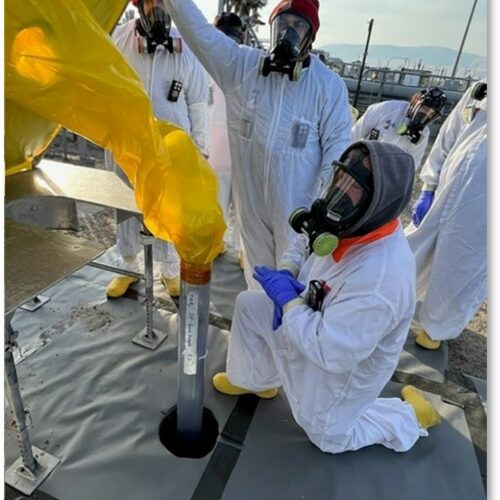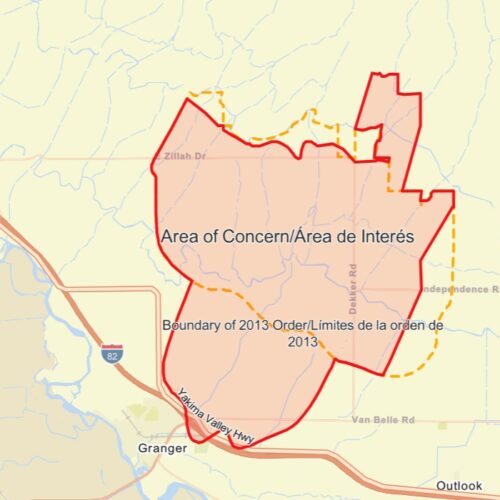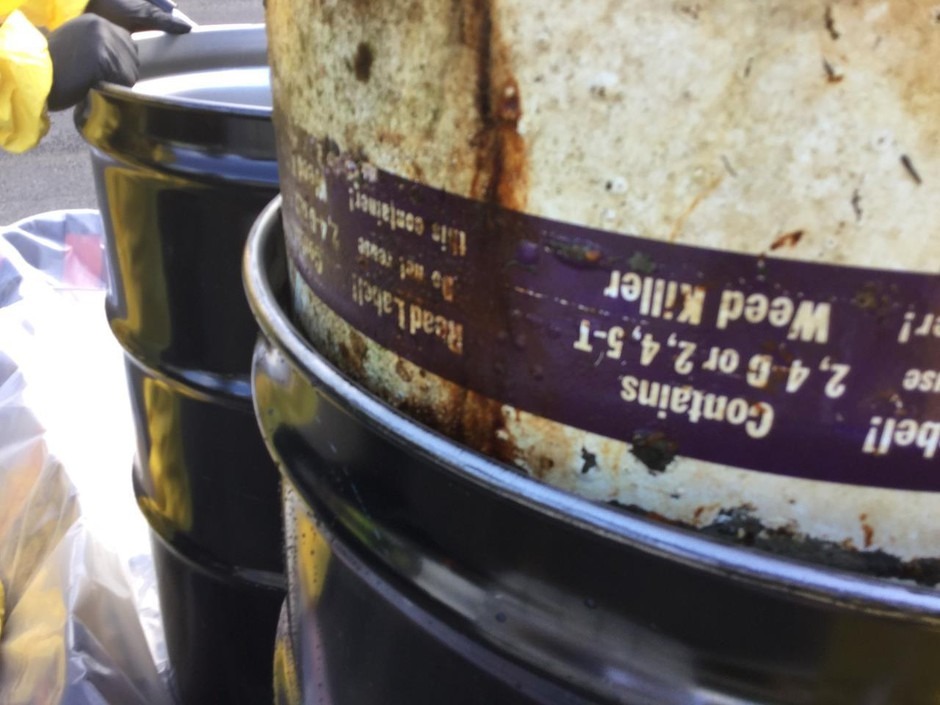
EPA Begins Removing Herbicide Barrels From Eastern Oregon’s Wallowa Lake
READ ON
The Environmental Protection Agency has begun removing potentially contaminated barrels from Wallowa Lake. Despite initial fears, the barrels seem to have been full of lake water, though the EPA is waiting for test results to confirm that the water and barrels are indeed clean.
The barrels were first found nearly 10 months ago by recreational divers, who were alarmed to see one labeled with “2,4-D or 2,4,5-T.” 2,4-D and 2,4,5-T are agricultural herbicides that, when combined in military strengths, can form Agent Orange. Agent Orange was an herbicide and defoliant that the U.S. military sprayed during the Vietnam War, with devastating public health and environmental consequences.

Wallowa Lake in eastern Oregon supplies drinking water to the city of Joseph. CREDIT: AARON SCOTT/OPB
Initially, divers reported over a dozen large, intact barrels beneath the surface, and several others that were rusted away. Wallowa Lake is normally the source of drinking water for the nearby community of Joseph. On Thursday, officials started drawing water from a well instead, and will continue to do so for the duration of the clean-up. The lake is also used by recreational boaters and swimmers.
“We have now, after several days of investigation, determined that it was only one drum with that herbicide label, and that drum was filled with lake water,” EPA spokesperson Bill Dunbar said Monday.
It’s not uncommon to find barrels like these in lakes, says Dunbar said. Empty barrels are frequently used as floats for docks, while others are filled with sand or water and used as weights for anchors, and these barrels were found near a marina. Still, that doesn’t mean that a barrel full of herbicide couldn’t have found its way to the bottom of the lake.
The EPA arrived at Wallowa Lake late last week with an ROV — an unmanned submersible vehicle — which they used to scout the area. According to Dunbar, they found 69 barrels, and suspect there could be several more, “From what I understand, there could be hundreds in the lake from many decades of use.”
So far only one barrel has been found to have a label. It said “2,4-D or 2,4,5-T”, not “2,4-D and 2,4,5-T” Dunbar said that makes it unlikely that it contained both chemicals mixed together as Agent Orange. The Vietnam War defoliant got its name from the orange identification stripes painted on the 55-gallon drums that it used to come in.
Those stripes were absent from the barrel. Although the barrel most likely never contained both herbicides, 2,4,5-T can be toxic, and has been banned for use in the US since 1985. 2,4-D is still commonly used as an herbicide.
Divers later recovered the barrel and found it had several holes in it and was full of lake water. It’s unclear if it was sunk empty, or if the contents escaped in the decades since it was sunk.
Another barrel labeled “diesel” was also removed. The EPA plans to continue to check the barrels, and remove those with labels indicating they could have toxic contaminants. The water near the barrels has also been tested, as have sediments at the bottom of the lake. No test results have been released.
Copyright 2019 Oregon Public Broadcasting
Related Stories:

Washington state, federal agencies finalize agreement for tank waste cleanup at Hanford
Hanford workers take samples from tank SY-101 in southeast Washington state. (Courtesy: U.S. Department of Energy) Listen (Runtime :59) Read When it comes to tank waste at Hanford in southeast

Federal judge orders Yakima County dairies to test wells, drinking water
A federal judge in Eastern Washington granted a preliminary injunction in a lawsuit that
involves over ten Yakima County dairy producers.

After years of negotiations, new government Hanford plan stirs up plans to treat radioactive waste
A 2021 aerial photo of Hanford’s 200 Area, which houses the tanks and under-construction Waste Treatment Plant, in southeast Washington. (Credit: U.S. Department of Energy) Listen (Runtime 1:01) Read There
















